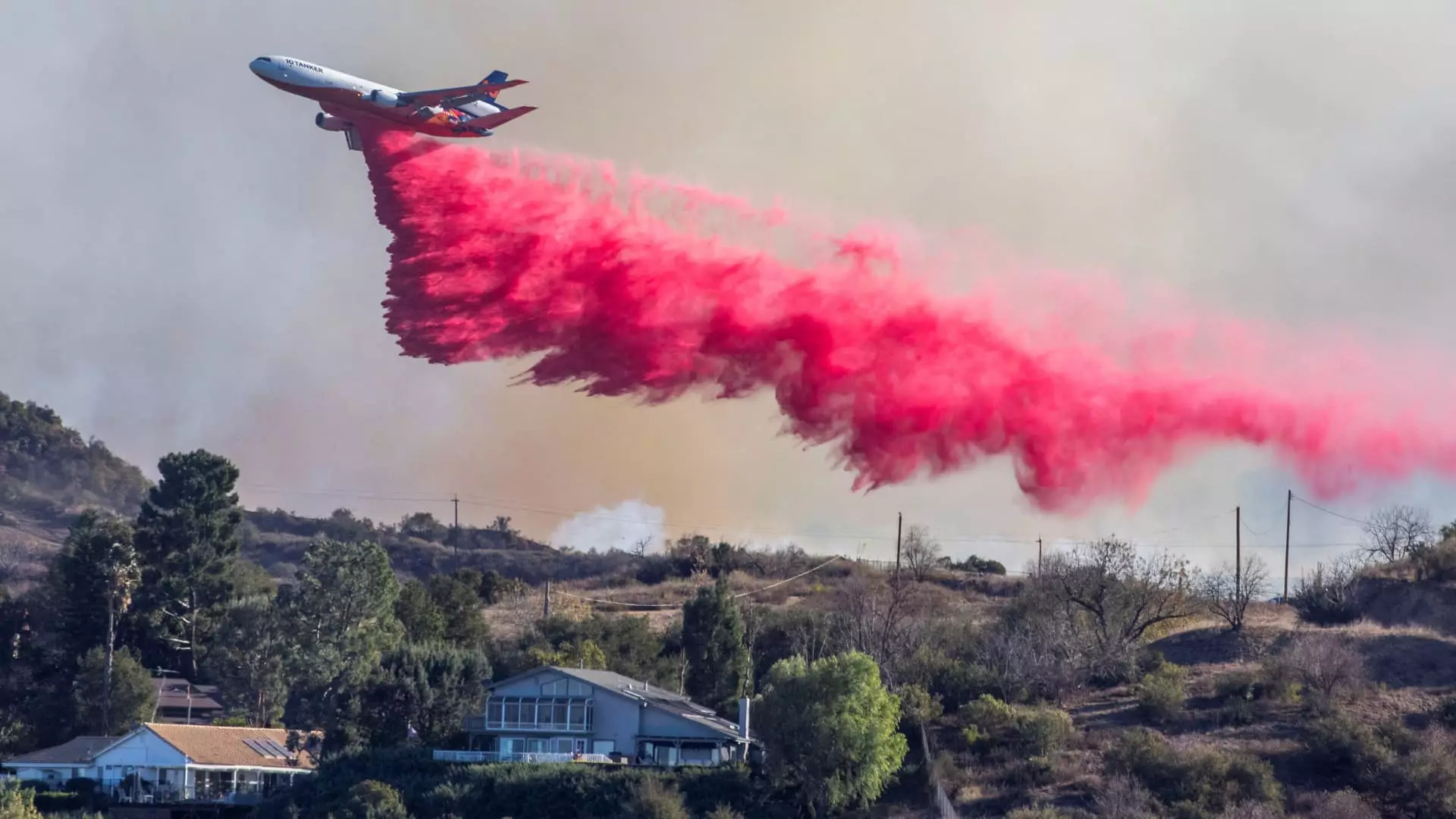In recent years, the frequency and intensity of wildfires have dramatically escalated, placing unprecedented strains on firefighting resources. The catastrophic flames that engulfed parts of Southern California earlier this month served as a stark reminder of the growing threat posed by wildfires. As the California Department of Forestry and Fire Protection (Cal Fire) grappled with these out-of-control infernos, aerial firefighting companies faced overwhelming demand for their specialized services, even in what is traditionally considered the off-season for such operations.
Aerial firefighting has become an indispensable strategy against wildfires. The United States boasts one of the largest civil fleets dedicated to this purpose, comprised of both fixed-wing and rotor-wing aircraft operated by government agencies and private companies alike. Notably, firms such as 10 Tanker Air Carrier deploy converted DC-10 aircraft—classified as Very Large Air Tankers (VLATs)—to combat flames from above. With contracts that stretch into the billions, companies are also expected to sustain their operations throughout the year, catering to an increasing and ongoing demand for firefighting support.
However, the logistics of maintaining and deploying these aircraft present genuine challenges. Management difficulties arise from the heavy reliance on contracts that allow for staggered usage and maintenance cycles, often leaving aerial units grounded during critical wildfire outbreaks. Joel Kerley, CEO of 10 Tanker, voiced the harsh reality—the existing number of aircraft is simply insufficient to meet growing demand, particularly when disasters strike unexpectedly.
A first-hand observation comes from the United Nations Environment Program, which warns that wildfires are anticipated to become both more frequent and severe in the 21st century. According to the U.S. Environmental Protection Agency, the last two decades have shown a steady increase in areas damaged by wildfires across the country. As climate change continues to influence weather patterns, the volatility of wildfire seasons is set to escalate dramatically.
This growing trend requires not only the expansion of aerial firefighting fleets but may compel governments and organizations worldwide to increase their capabilities. Countries such as Australia, which have faced extensive wildfire crises, are starting to bolster their own firefighting fleets, suggesting an emerging arms race of sorts in the battle against wildfires.
The operational aspect of aerial firefighting is complex, necessitating specialized training and conversion processes for the aircraft. As Kevin McCullough, president of Aero Air, articulated, it takes about 18 months to convert a commercial jet into a functioning fire bomber. Such transformations include extensive re-engineering—these planes are not simply fitted with water tanks but are fundamentally modified to drop fire retardants effectively.
Meanwhile, pilots from varied backgrounds—including military veterans and former commercial airline pilots—bring a unique blend of skills essential for executing high-stress aerial missions. The roles of coordination and precision during operations cannot be overstated, as the terrain often presents a multitude of challenges. Firefighters face not only the ferocity of the flames but also natural forces like gusty winds, which can thwart aerial approaches and complicate fire suppression efforts.
To address the demands of modern firefighting, manufacturers are working diligently to innovate. Companies such as De Havilland are developing new models of water-scooping aircraft designed to enhance efficiency and effectiveness in aerial firefighting. With the introduction of the DHC-515 planned for 2028, improvements will focus on cockpit conditions, water-drop technology, and resistance to corrosion from saltwater, ensuring that fleets remain robust in the face of escalating wildfire threats.
However, the path to modernization faces financial and logistical hurdles. The commercialization of improved aircraft and the actualization of government contracts hinge on foresight and investments from both public and private sectors. As demand continues to surmount, the dialogue surrounding aerial firefighting’s future must also incorporate sustainability practices that align with environmental stewardship, ensuring that resources not only meet the current crises but also adapt to prevent future disasters.
As climate change looms as a formidable adversary against firefighting efforts, it becomes crucial to reevaluate our existing strategies and bolster both aerial capabilities and ground-based responses. The extreme wildfires of today are merely a precursor to what lies ahead unless meaningful steps are taken to unify efforts against them. It is not just a matter of deploying more aircraft but reinventing our approach to managing landscapes at risk and investing in research and development to stay ahead in this battle for our environment and the communities under siege by flames. Collaborative actions now will shape our resilience against future infernos.

